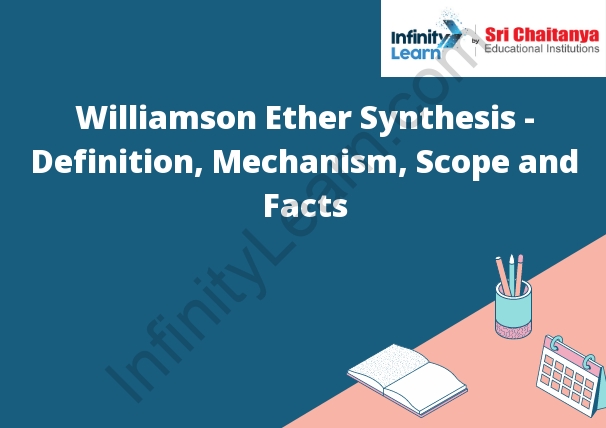Table of Contents
What is Williamson Synthesis?
The Williamson Synthesis is a reaction that allows for the construction of aromatic rings from alkenes using a Grignard reagent. The reaction begins by forming the Grignard reagent, which is then used to attack the alkene. This forms a carbon-carbon double bond in the ring. The final step is the hydrolysis of the carbon-magnesium bond, which releases the magnesium salt and also forms the aromatic ring.

Williamson Ether Synthesis Mechanism
The Williamson ether synthesis is a nucleophilic substitution reaction between an alkoxide and an alkyl halide to form an ether. Therefore the reaction mechanism involves the formation of a stable intermediate, the alkoxide ion.
The alkyl halide is first converted into the corresponding alkyl sulfonate by treatment with sulfur trioxide (SO3) in the presence of water. The alkoxide ion then formed by the reaction of the alkyl sulfonate with an alcohol. The alkoxide ion is a strong nucleophile and attacks the carbon atom of the alkyl halide to form the ether.
Scope
Williamson synthesis is a versatile technique that can used to form carbon-carbon bonds. The reaction can used to form a wide range of functional groups, including ketones, aldehydes, esters, and amides. The reaction is also tolerant of a wide range of functional groups, including alcohols, phenols, and amines. Additionally, the Williamson synthesis can performed under a wide range of conditions, including in the presence of water or in the presence of an acid or base.Facts on
Williamson Ether Synthesis
- It is one of the oldest and most commonly used methods for the preparation of ethers. It involves the nucleophilic attack of an alkyl halide.
- Williamson’s synthesis is an organic reaction used to synthesize ethers. However it involves the nucleophilic attack of an alkyl halide on an alkoxide.
- It is an organic reaction, forming an ether from an alcohol and an alkyl halide, by reaction of the alcohol.
Facts about Williamson Synthesis
Williamson Synthesis is a method of preparing ethers from alcohols and alkyl halides. This method is named after Alexander Williamson, who first reported the reaction in 1850. It is one of the most important and useful reactions in organic chemistry and has been used in the synthesis of various pharmaceuticals, agrochemicals and other organic compounds.
The reaction involves the nucleophilic attack of an alcohol on an alkyl halide in the presence of a base such as sodium or potassium hydroxide. As a result of the reaction, an ether is formed and the alkyl halide is regenerated. The reaction proceeds via the formation of a tetrahedral intermediate, which is formed by the attack of a nucleophile on the carbon atom carrying the halide.
The Williamson Synthesis is highly selective and can be used to synthesize ethers with different functional groups. It is also highly efficient and can be used to synthesize ethers in high yields. In addition, the reaction does not require high temperatures or pressures and is relatively inexpensive.
The Williamson Synthesis has its limitations, however. One limitation is that the reaction requires anhydrous conditions, as the presence of water can reduce the yield of the reaction. In addition, the reaction is only suitable for synthesis of ethers with primary and secondary alkyl halides; tertiary alkyl halides will not react.
Overall, the Williamson Synthesis is a useful and versatile method for synthesizing ethers from alcohols and alkyl halides. It has many advantages, such as its high selectivity and efficiency, and it can be used to synthesize a wide variety of ethers. However, it is important to keep in mind its limitations, such as its requirement for anhydrous conditions and its incompatibility with tertiary alkyl halides.






